Did you know you could turn milk into plastic? I didn’t. I had no idea!
I did know that you can turn cream into butter, which is just what I was planning on doing with one of my Kindergarten classes back when I taught in the classroom. We love easy science experiments!
There I was, armed with gallons of cream (which, as it turns out, was waaaay more cream than needed), when one of my lovely colleagues said, “Oh! Are you making plastic?”
I looked at her as if she were insane and said, “No… this is cream.”
She then smiled and said, “Oh, I thought it was milk,” and started to walk away.
As if you could walk away after a sentence like that! I quickly chased after her and got all the details on how to turn milk into plastic. Turns out—she’s not insane! You really can! And best of all, you only need to add vinegar.
Before we get into it, you’ll also want to grab your FREE Printable Instructions! Little ones will love being able to follow along, helping with each step as they take part in this experiment:
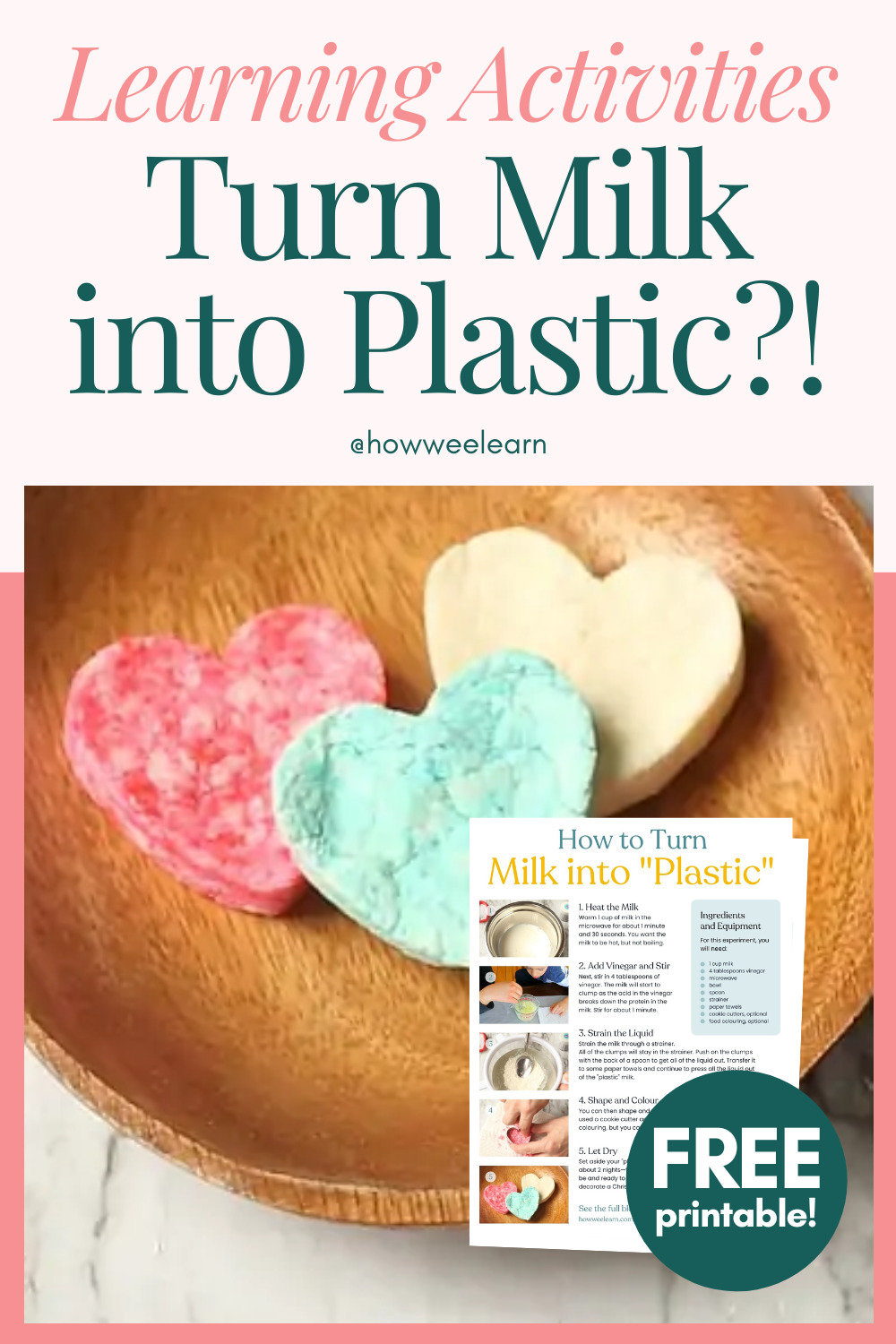
Good news, friends, I have worked out all the kinks, done this science experiment more than a few times (it’s that awesome), and have all the details just for you. This is such a great STEM activity for kids!
How to Turn Milk into “Plastic”
You can turn milk into “plastic” in literally minutes with only milk and vinegar and a few kitchen supplies—and it is awesome.
Materials
- 1 cup whole milk
- 4 tbsp vinegar
- microwavable bowl or a saucepan
- mixing bowl
- strainer
- spoon
- paper towel
- cookie cutters
- food coloring, optional

Directions
Step 1: Heat the Milk
First, take 1 cup of milk and warm it in the microwave for about 1.5 minutes, or slowly heat it in a pot on the stove (you want the milk hot but not boiling).

Step 2: Add Vinegar and Stir
Next, stir in 4 tablespoons of vinegar. The milk will start to clump as the acid in the vinegar breaks down the protein in the milk. Stir for about 1 minute.

Step 3: Strain the Liquid
Strain the milk through a strainer. All the clumps will stay in the strainer—really push on them to get all the liquid out.

Step 4: Shape and Color
Finally, transfer it to some paper towels and continue to press all the liquid out of the plastic milk. You can add a few drops of food coloring if you’d like, or leave it white—we’ve done both! Then shape the “plastic” by pressing it into a cookie cutter.
I flipped our cookie cutters over so you could get a better look at how it compresses in the photo below (we opted to keep these little stars white).

Step 5: Let Dry and Display!
Set them aside to dry for a good long while—it could take a couple of nights, or you can pop them in the fridge to help them harden a bit faster—then they’re ready! Once they’re hardened, they are ready to be hung up in a window, on a door, or used to decorate a Christmas tree!
My kids just loved this science experiment; I hope yours will, too!
 |
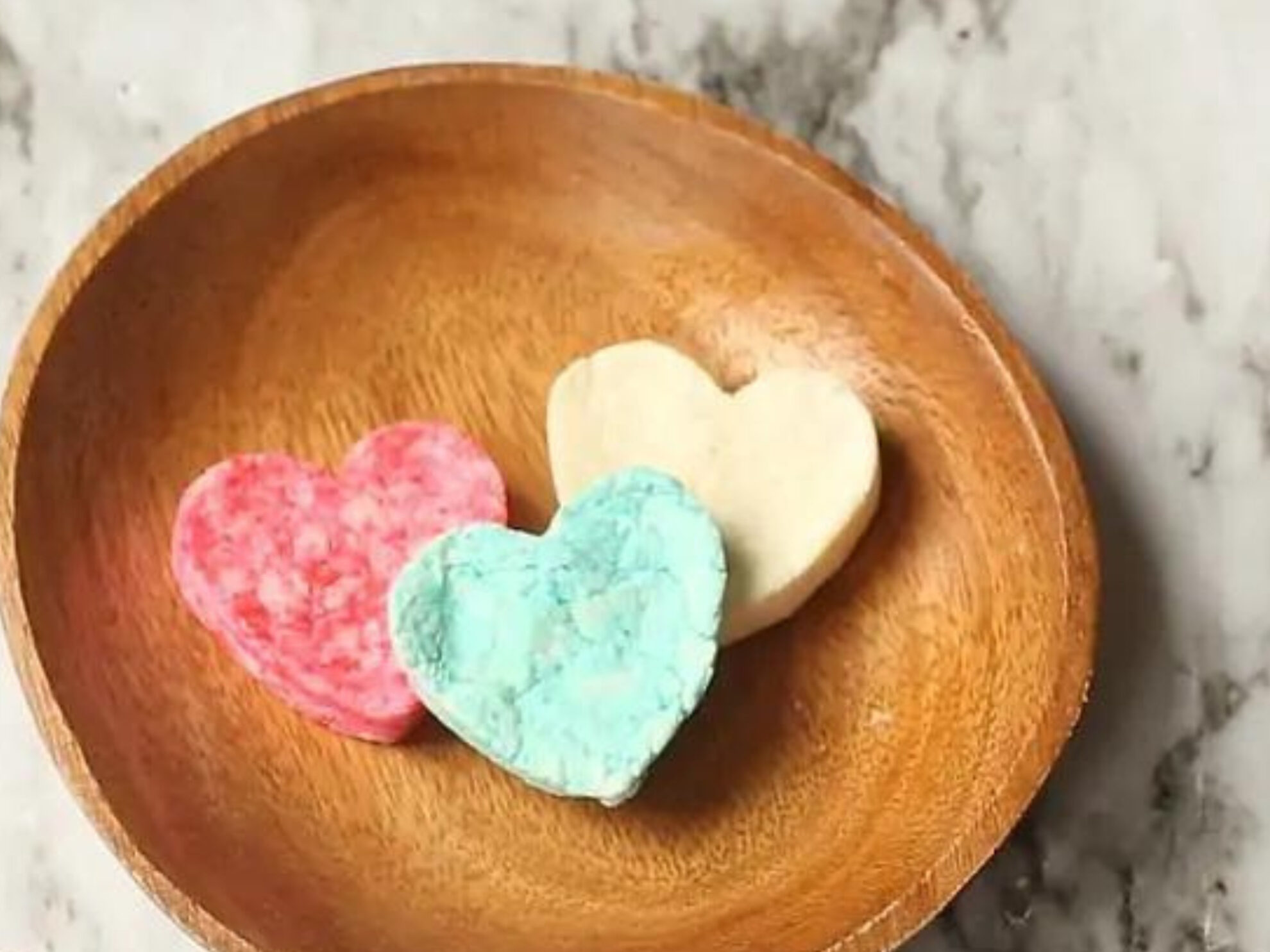 |
So this is the takeaway lesson here, friends: If someone says something that doesn’t make sense, chase them down the school hallway and ask questions! You might just discover the coolest science experiment of all time.
*** Goodness gracious! I had no idea this post would elicit quite so much discussion. I can certainly say I have learned a ton reading through the comments below. If you are looking for more information about the science behind this process or about the making of paneer, please read the comments on this post.***
If your children enjoy learning and experimenting in the kitchen, they’ll love my Edible Science Family Unit Study! It is full of delicious, hands-on activities—from learning about states of matter while making popsicles, to discovering how harvested cacao pods become chocolate while making some delicious chocolate-dipped cookies.
Check out Edible Science!
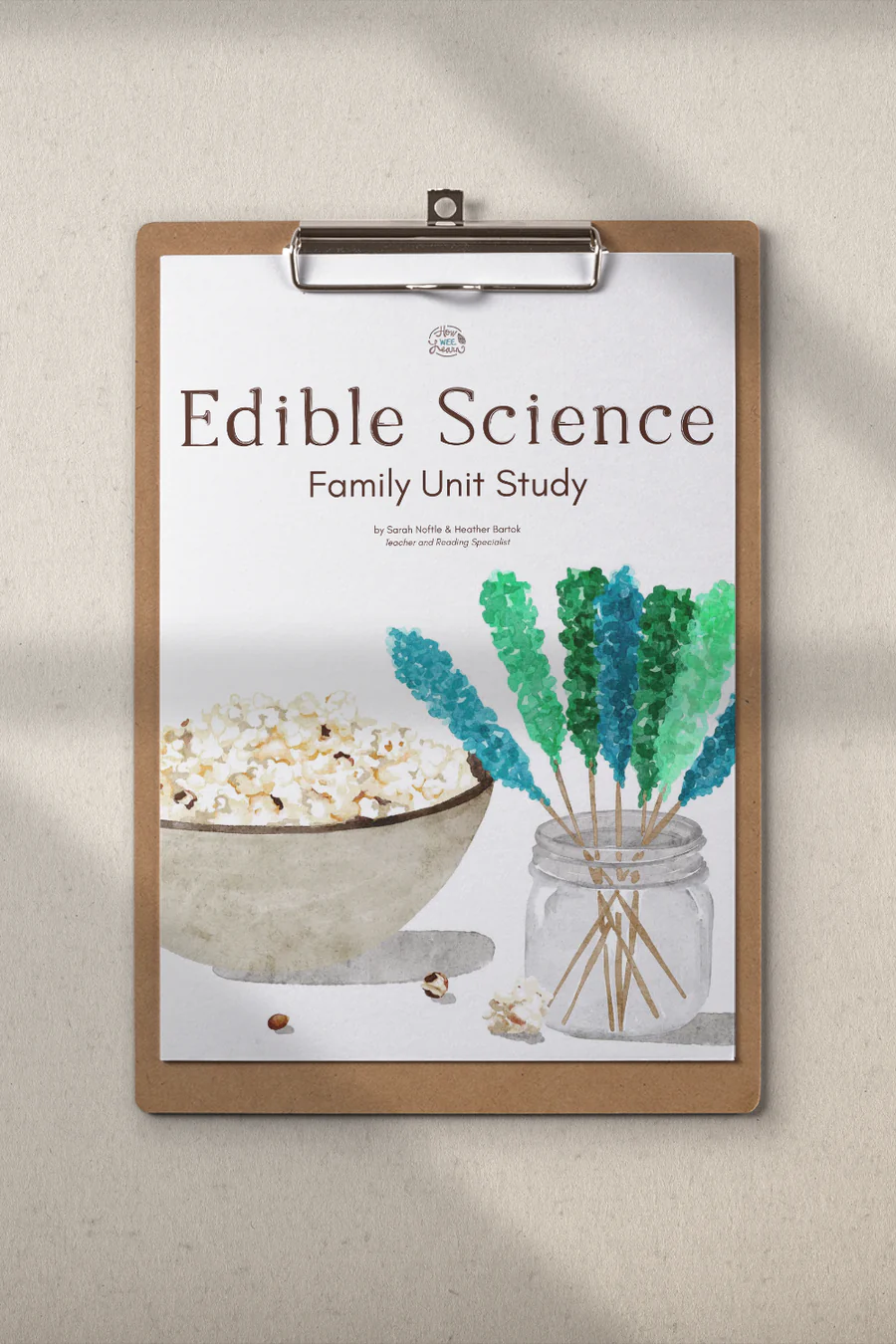 |
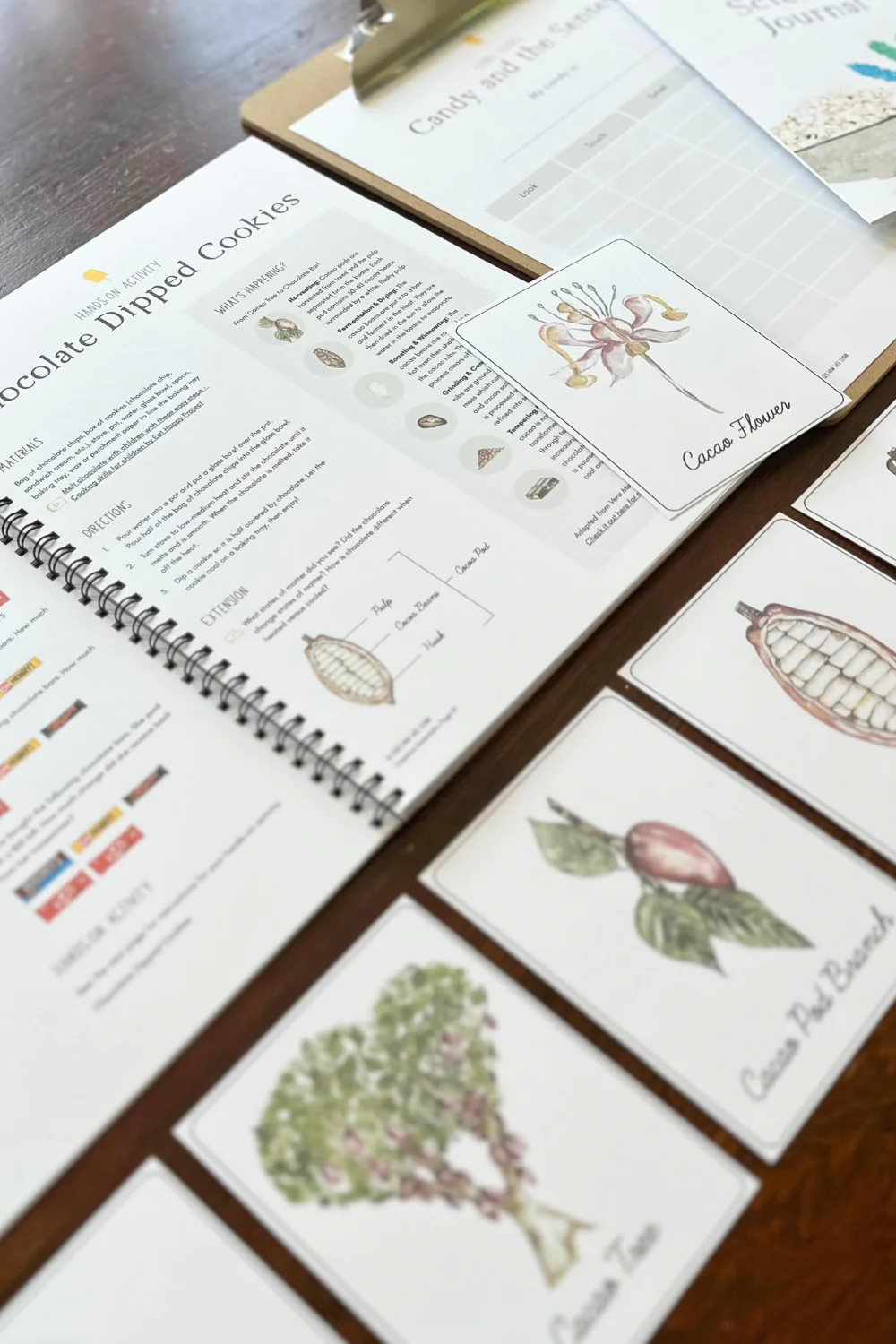 |
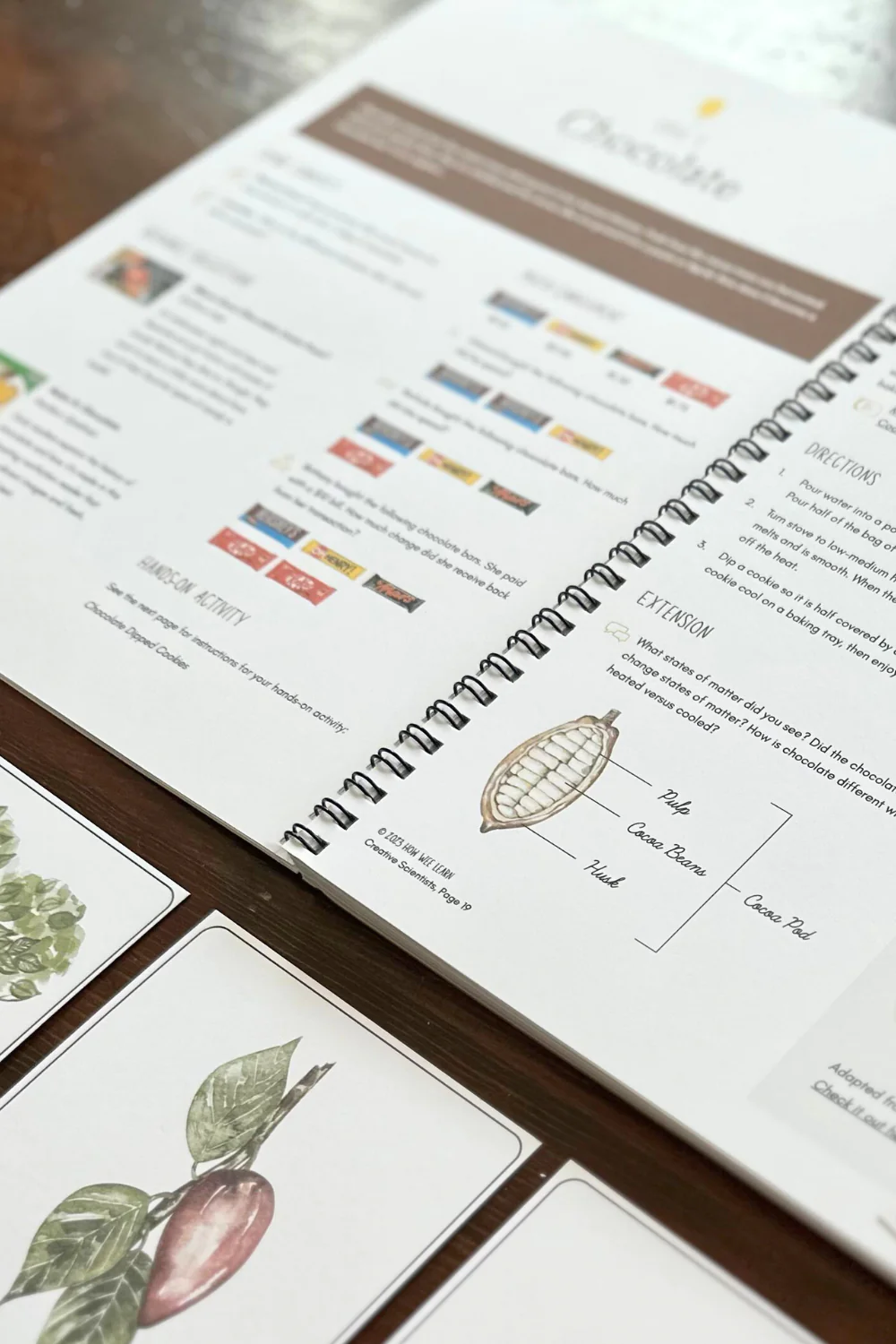 |
Thank you so much for reading, my friend!
xo
Sarah
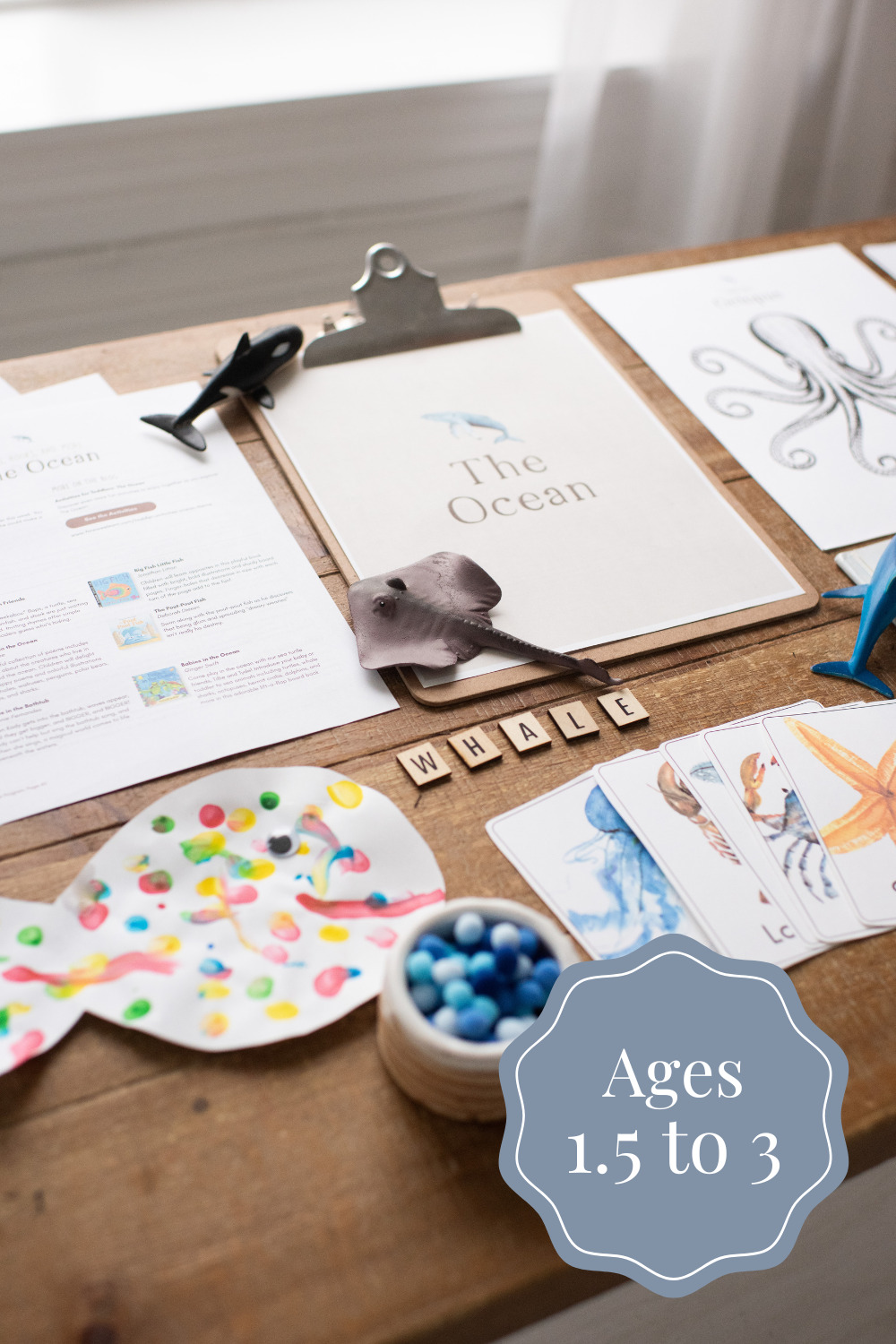
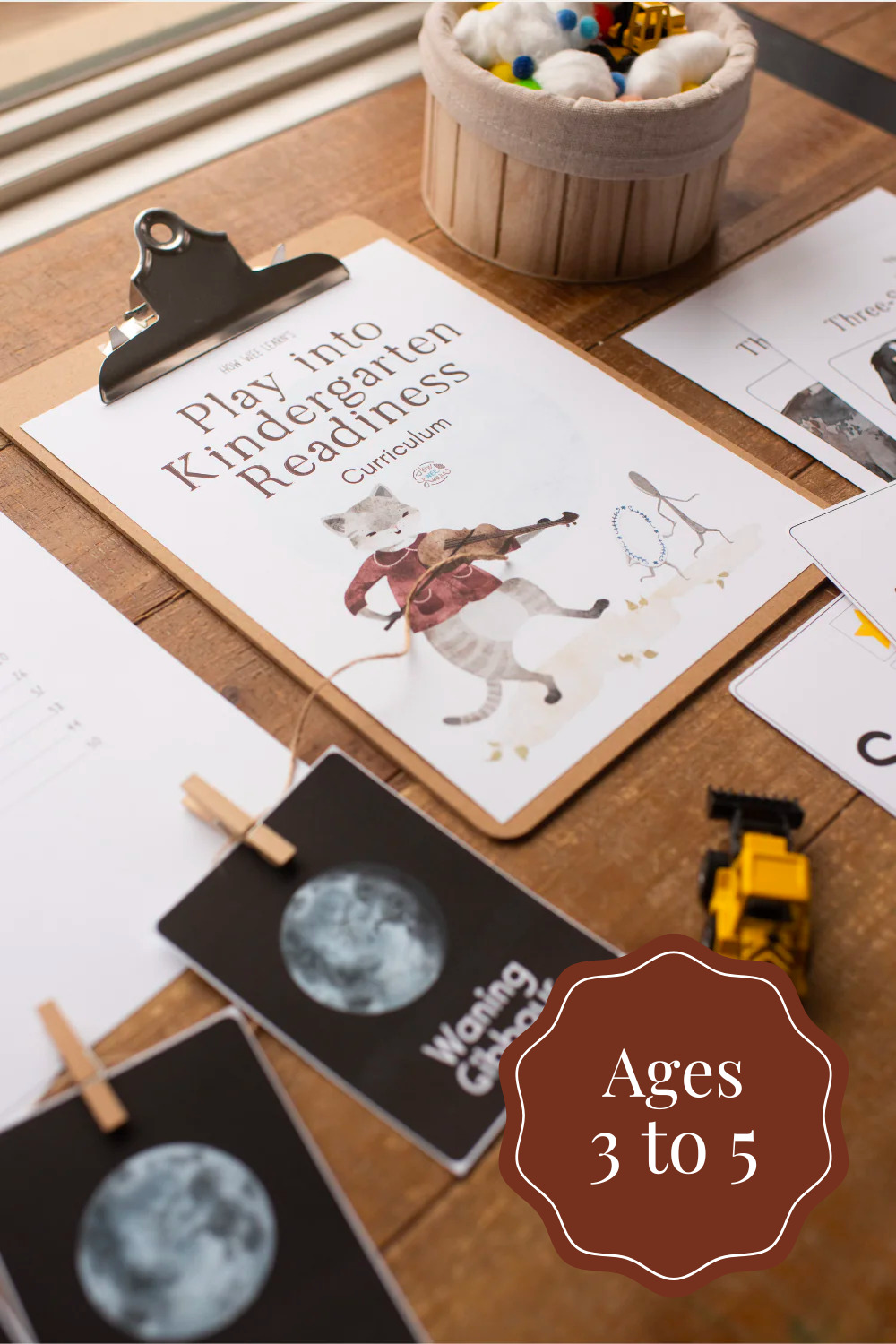
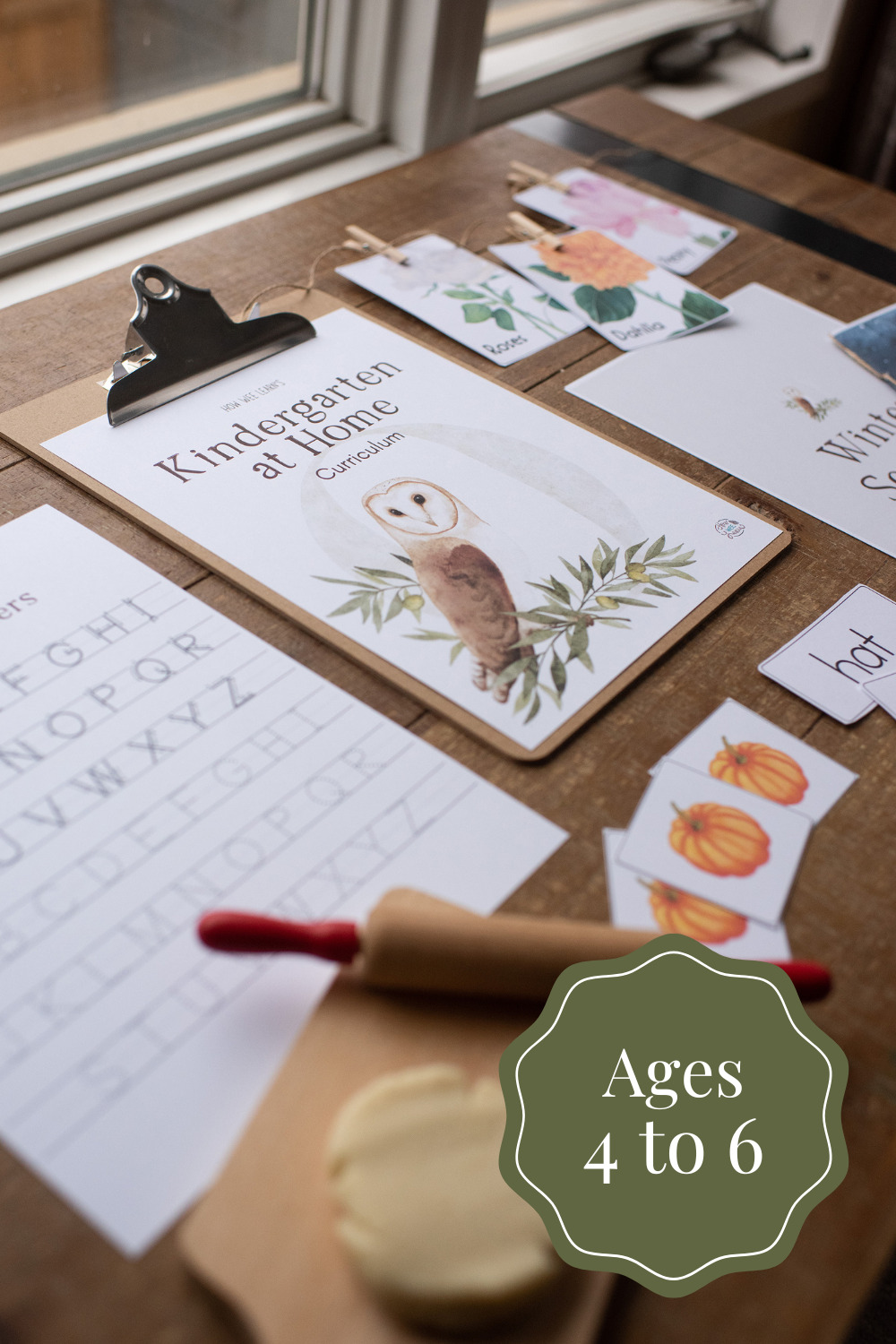
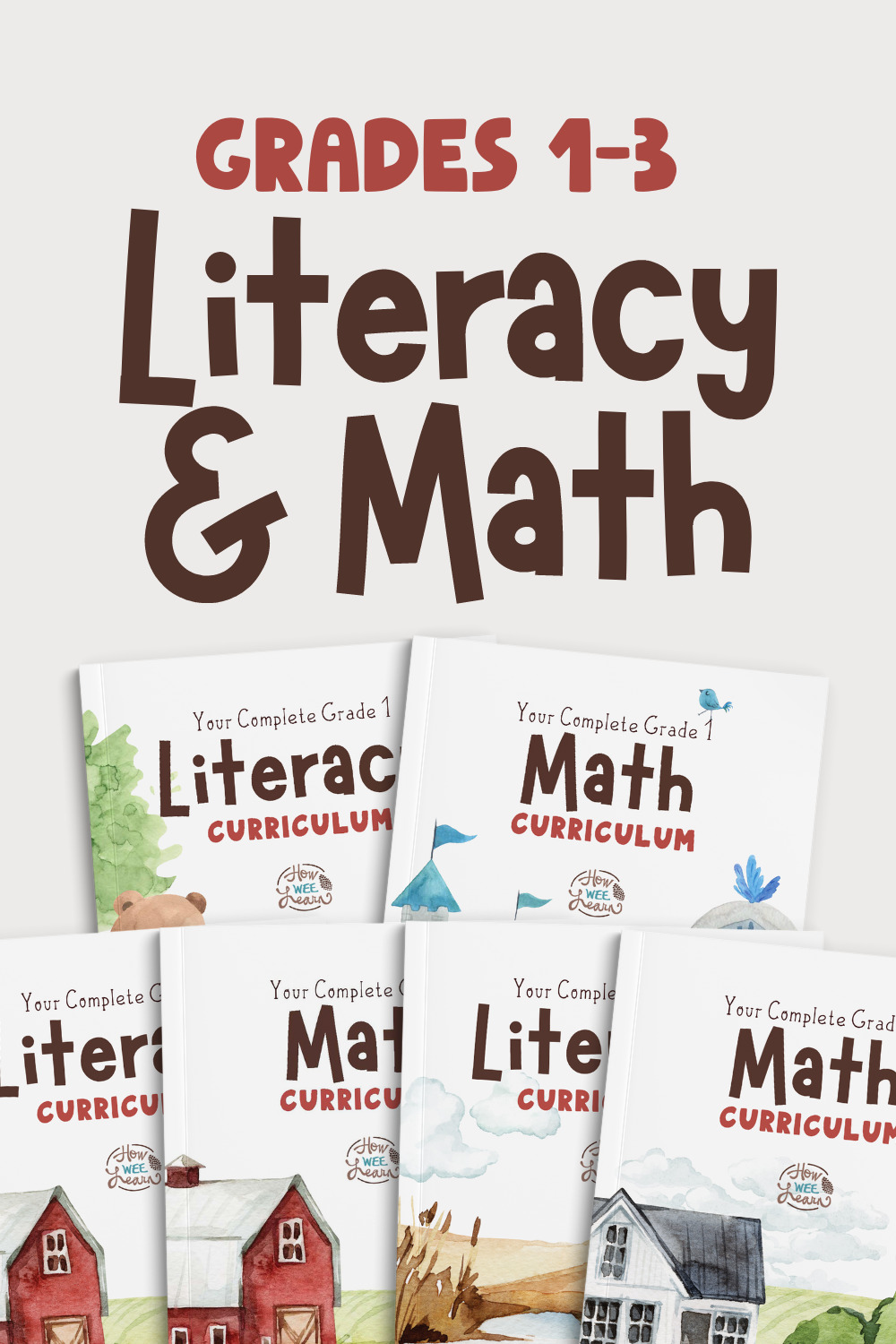

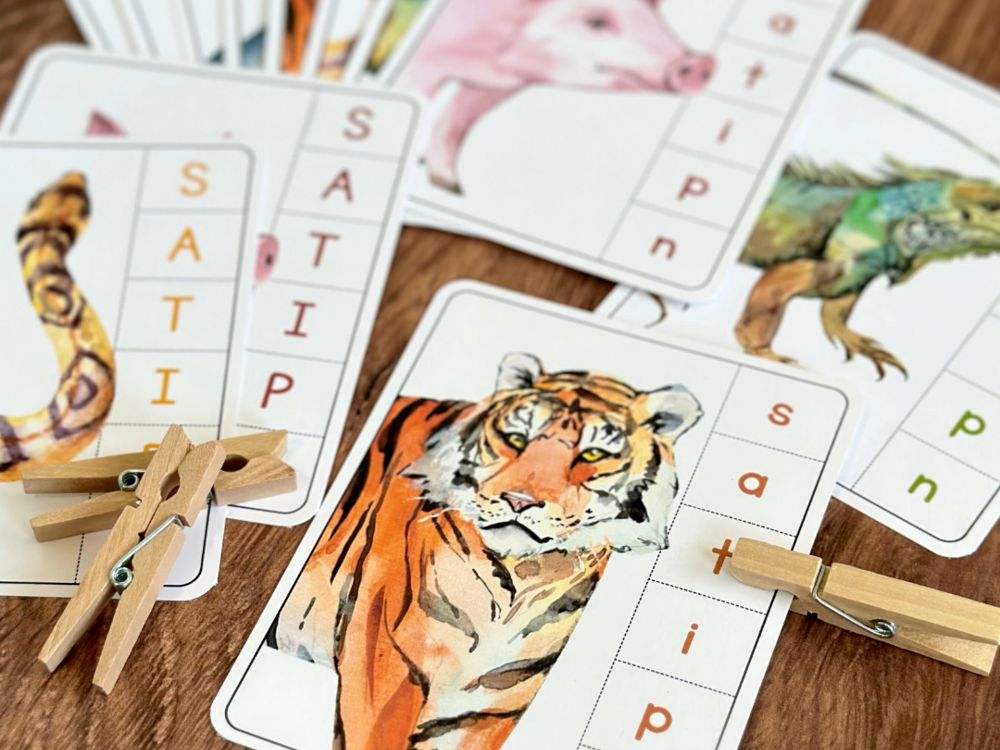
vamos a hacerlo con mi hija. GRacias por compartir!!!!!! saludos desde Argentina
Most welcome! Thank you for taking the time to comment … and all the way from Argentina! Wow!
Love it….wow can you imagine all the stuff that goes on in our bodies…plastic out of milk. makes me Think..What else is chemically going on causing serious upsets inside???
Hey….this is not plastic this is called paneer…means cottage cheese. It is very popular in India.
This is eatable and very very healthy thing to eat .
Is that how you make paneer? I love paneer. I’ll definitely try it.
Yes, and we make it a lot using either vinegar or lime juice or citric acid granules.
It is delicious and healthy and one can make innumerable things from it!!
Also, the water can be used for household plants. It nourishes them!
I was going to also comment that this was a simple cheese. I make it at home. The vinegar causes the curds to form and separate from the whey.
This is not plastic…it is the process for making homemade cottage cheese- this makes for a good home science project for the kids though…Thanks for sharing
Thank you Rekha!
Thank you, this helps explain my baby’s extreme allergy to milk years ago. I presume stomach acid could cause a reaction much the same. It looks very much like curdled stomach milk. That was just a beginning.
Really it doesn’t look like cottage cheese!!!!!!
I was just wondering if you cold eat it? What do you use it for and how do you eat it?
I was just thinking that myself.. This is very interesting indeed.. I think my daughter would be interested in trying this experiment though..
I wonder about the pregnant women and what happens to their fetus who crave pickles and ice cream? Pickle juice is made with vinegar and ice cream is made with milk.
Honey. The fetus is not in the stomachs with all the stomach acid. It’s in a separate place, the uterus, in which blood flood with all the nutrients broken down by moms body nourish the body since the fetus cannot yet break down foods-like pickles and icecream or anything else- on its own. She is just developing while inside and needs protection and extra support at that stage to focus on growing toes and organs.
THAT’S what you got out of this cool thing! Seriously?!
?? I think it’s a wonderful way to think…. out of the box.
If we didn’t have people who can think out of the ordi ary, we’d be in a sad place.
I tried twice to make the recipe but it did not work. I heated the milk on the stove to just before boiling then added the white vinegar. Also, I used 2% milk. Does that make a difference?
Hmmm – it sounds like you did it all correct. Does anyone have any suggestions for Kathleen please?
The same with me just now. However, I used a bit old apple vinegar and lactose free and skimmed milk. It showed a bit but more like freckled. I made paneer long time ago with lemon and it worked well.
Now the kids enjoy their mess when I added salt and flour. Let´s see that result 😀
Regular milk best for panner and do not add too much vinegar slowly slowly
Depends on the fat content of the milk and the amount of vinegar you add. For half litre(3%fat) milk, i would add 20 ml of vinegar to make panner. Hope this will help.
I found this description and thought it did a great job explaining why the lower fat milks don’t produce as well. Seems the casein molecule needs fat to start forming. Logic says less fat, less “seeds” to start the process.
“How do different amounts of acid (vinegar) affect milk and why?
Milk is already slightly acidic, but the quality of milk as an emulsion enables a characteristic curdling reaction when the pH drops further. Usually fat and water don’t mix, but the casein protein chain binds them together. The protein has both water loving and fat loving particles; presented with both water and fat in milk it grabs the fat and clusters together forming globules with fat on the inside and the water loving particles on the outside. Each globule has a negative charge, repelling each other and distributing each other throughout the water content, forming the emulsion. When these globules are broken, curdling takes place.
Lowering the pH level of milk by adding vinegar or lemon juice causes the casein protein to unwind. These proteins are able to interact and, over time, clump together creating the characteristic lumps of curdled milk”
Interesting – thank you for all of this information!
Maybe use ful cream milk?
Yes, it mattered that she used 2%. The vinegar is causing a chemical reaction with the fat proteins in the milk. Whole milk should have sufficient fat content to see the separating into curds & whey.
Side note – This is what Little Miss Muffet was eating.”
Just maybe 2% is not high enough in fat to solidify it. Just a thought. Thanks for educating me and for such a cool project. I knew that buttermilk can be substituted with milk and vinegar, but never considered adding enough vinegar for a project on how to make “plastic”.
Use whole milk. I use it to make cheese for many Indian dishes. After separating the curds from the liquid in a strainer, rinse them and wrap them tightly in cheesecloth, wringing out as much moisture as possible. Then I tie the cheesecloth into a bag and hang it over my sink from the faucet and let it drain for about an hour. Now form the cheese into a flat circle about 4-6″ in diameter. Put it on plate and place another plate on top with a can of something heavy like a large can of tomatoes or a bag of sugar on top to weight it down for an hour. Now unwrap the cheese, slice it into pieces about 1″ thick and dry them in oil or clarified butter. It took me longer to describe this than to make the cheese!!!
You canNOT use ultra pasteurized milk. It has to be milk that you buy in the refrigerated section of the store.
You need to use whole milk. The vinegar denatures the enzymes in the milk and separates the solid from the liquid. The milk fat is the solids. So, 2% will not get you very much solids.
What vinegar is best? White?
Interesting question. I have only ever used white vinegar myself.
It needs to be whole milk.
Yeah, good for you! ??
Have you tried pressing this in molds and let it dry? If so how did it turn out?
Hi there, we pressed it into cookie cutters and removed before it dried. It turned out great!
Does the plastic have an unpleasant odor? I just think of how bad sour milk smells!
I had wondered that as well, but no odor at all! Great question.
Ok I got a question. As it’s some form of cheese, doesn’t it begin to get moldy and smelly at some point? I would love to try this with my Kindergarten class, but the thought of sending moldy, smelly cheese home just doesn’t work for me…lol Imagine the reaction the parents would have!!! I’m dying inside thinking about it!
LOL! It honestly does not smell. I do not know the chemistry behind why this is … and perhaps over a very, very long period of time it would go bad, but we had ours for 6 months with nothing!
Le añades sal y ha es queso blanco. Rico
this is so cool it kinda works but it was a messy project oh well messes are also fun
Will this work with soured milk?
why not try it and let us all know
I was just wondering the same thing! I don’t have any on hand right now but I will try it next time the milk left out overnight!
Awesome! Can’t wait to try it with the kiddos.
Yay! Have fun – it is really neat!
Does it start to smell?
Not yet – and ours is more than a month old!
How long can you keep it till it starts to go bad?
I’m sure someone will have a better answer – but mine is, I don’t believe it goes bad? At least ours hasn’t yet
Hey
It is not plastic but paneer used in India. And it is not good for health to keep it for so long. It is like if u keep mozzarella or any eatable cheese outside.
I realize it isn’t Cottage cheese, but as that’s all I know, I’ll speak as if it was…I think they have to be similar. Cottage cheese will keep a long time in the fridge, but if it begins to form a pink mold, throw it out.
Before plastic people used this method to make buttons that are possibly still around today! My grandma had the mould presses for all sorts of different shapes!
SO neat!
Best reply ive seen yet on here.
I can’t believe an animal product such as this will not degrade (get rotten) or attract bugs over time. Is it the vinegar that protects it from fails and keeps it as hard as a button? I am totally amazed, and that it is edible as well. . Live and learn!
WOW!! That’s awesome…. thank you.
Bio degradable??
Interesting that’s the same way you make farm cheese. I wounder what the sciance behind it is. Thanks for the post.
You’re making curd, acid is a coagulator used in some kinds of cheese (the other being rennet). You’ve separated the protein from the whey, or the plastic from the liquid. If you look up a recipe for the Indian cheese called Paneer, you may be surprised at how remarkably similar the processes are. Fun project!
Yep! Taking out the part of the milk in allergic to! Lol I’m not surprised it gets hard like plastic. I swear that’s what milk does in my stomach shortly after my face goes red and itchy lol
It is really cool! How long the ” plastic” will last and will it become stinky?i will do it with my boy.
Hi Jing, I think it is very cool too! The plastic lasts and lasts and hasn’t gotten stinky at all for us yet. I hope you have fun with your son!
Does it matter what type of vinegar you use?
Hmmm… I used white vinegar – I’m afraid I’m not sure if it matters! Perhaps other readers will have an answer for you.
You can use any food grsde acid… citric acid, apple cider vinegar, lemon juice…
It is not plastic ……. This is how you make cheese , processing milk by adding vinegar is turning to cheese, please don’t call plastic. Yes you can play with that , but will never turn to PLASTIC.
Thank you Mrs. Perfect. The kids think it’s plastic and the science is good. fun sucker.
Tim, most plastic is made from petroleum. Plastic also does not readily biodegrade (a plastic bottle can take 450 to 1000 years to biodegrade). Some plastics are known to leach chemicals that are suspected of causing cancer or disrupting hormones. I am not sure you are doing your kids any favours in getting them to believe that milk and vinegar make ‘plastic’.
Telling your kids that this process is related to cheese making or calling it something else is not going to spoil the fun!!
I was going to say that it sounds like you are actually just making a really hard cheese.
I agree, I make cheese that way and use for cooking, is much better then store cottage cheese, is fresh and I make when I needed and don’t have chemical in home made cheese!!!!!!!!!
Do you use a smaller ratio of vinegar to milk when you’re making”farm cheese”?
Is there a difference in using 2% versus whole milk?
Hmmm … I am not sure – but if you do use whole milk please let me know!
Sorry but this is a recipy to make kind of cheese very pepulare .. im surprized that many of you dont know that!
Thats not a plastic!
You can use instead of vinegare lemon joice it will work and very tasty!
Yes it is ,2% milk make smaller amount off cheese .The fat in the milk is turning to the cheese after adding the vinegar!
Hi from Victoria Australia. This is awesome cant wait to try it but i will make it into an art activity.
Oh neat idea – come on back to share what you did please! I’d love to see.
That’s basically how you make buttermilk. I might try it with my grandkids. Thanks for sharing.
Thanks Ann – I hope you give it a go – it’s really neat!
That’s how I make buttermilk for our pancakes, in the mornings. I also use this buttermilk, while baking, in place of milk, buttermilk, and even water. This homemade buttermilk works very well everything I’ve used it for.
I’m going to try it with my grandchildren, for Christmas Decorations. Sounds like fun.
Yes, with one or two tablespoons of vinegar per cup of milk or milk alternative (e.g. almond milk) it can substitute for buttermilk in pancake or biscuit recipes. Makes them fluffier than plain milk.
Thanks for the butter milk idea.
Would it work using Almond milk?
I truly have no idea. My gut instinct would be that it would not, as the reaction occurs because of the proteins and fat in the milk — though I suppose both of those things are present in Almond milk as well … Hmmm … If you give it a try, please let me know!
Sorry this is a bit late, (a whole year late!) but using almond milk unfortunately does not work… I just tried it with my little one and we were very disappointed, but we still had fun trying!
What kind of milk do you use? 1%, 2% or whole?
We use 2% because it is what’s in our fridge. I would definitely be interested to know if others have had success with different varieties though
What is the ratio of mixture.
From 1 and 2 % milk you will have smaller amount of cheese!
My thoughts are is it more environmentally safe since it originated from milk and vinegar.
My teacher is making us to science fair projects and this was perfect! It was super simple and easy.
So glad it worked out for you Mac – thanks for letting me know!
My daughter and I are trying this right now with 1%. It definitely is not separating like it’s showing in your picture. We are using white vinegar also. We have been stirring for about 5 minutes. May have to get some 2% for this.
So with 1%, we added an extra tbsp of vinegar and stirred for about 8 minutes. It works and was a lot of fun. Thanks for sharing this.
Thank you for this Laura – glad it worked and you had fun!
Thanks so much for sharing. I’m going to try this with some of my students. What kind of vinegar is best to use? White distilled cleaning vinegar?
I hope you have fun Cleo – I’m sure your students will love it! We just used basic white vinegar. Thanks for writing!
why not try seversl combinations using fifferent milk and different vinegars. Let us know the results. Science can be fun, for girls as well as boys.
This looks cool. I’m going to use this with my 6 year olds. We are in New Zealand, so could I ask what percentage of fat do your milks have? We have full fat, trim or low fat.
Hmmm – I would assume “trim” would be equal to our 2% … I hope your 6 year olds love it!
This is great – I’ve been looking for some science / art projects to try with my kiddo.
Sorry to be pedantic but a few times you say you’re turning plastic into milk – I saw it on Pinterest and couldn’t work out how on earth that was possible. now I see, you’re not turning plastic into milk, but milk into plastic!
Really?! I will have to read through more carefully – thank you very much for pointing that out, I don’t want anyone trying to drink plastic!!! I hope you and your little ones love it
Hi I love this idea and cannot wait to try with my son! I was wondering at what point you mixed in the food coloring. Do you think it would blend better if added right to the milk in the beginning? Thanks! 🙂
We coloured ours at the end, and it did not work so well. I bet adding the colour right at the beginning would give a much smoother appearance – but with science experiments, who knows?! If you try it please pop back with an update. Thank you!!
mine came out kind of dry-ish and grainy like grated parmaesan cheese
Hmmm – Maybe more vinegar?
This looks like a great experiment thank you, but I have a question does it develop an order? Thank you
No odor at all! It’s fascinating!
Thank you for post this. I really like the idea and going to have a try with my preschoolers. I read all the comments as well. If there turned into kind of cheese, can we try it by mouth to see how it taste like?
This is beyond the scope of what I know I’m afraid Jackie. I can not say one way or the other as far as tasting it, but the experiment is really neat all the same!
I made it with my kids at daycare and we are waiting for them to dry
Great! How did they turn out?
You can paint these after they are hard right?
Yes you can. That is what we did.
You’ve made plexiglass. Dates from pre WW2 and its what air-plane windshields and windows used to be made with. I remember using our soured milk to do this about 75 years ago!!
This is great info! I read milk jewelry was a big deal during the Renaissance. This is our afternoon project today. Thank you so much for sharing this!
Cool I have some sour milk and a science minded and crafty grand kid. Coming over.tomorrow.
How did they get it to go clear making windshields for planes?
How did they get it clear so you could see thru it?
I like to know the answer too. It is so intriguing.
Ours was very crumbly is this right? or did we do something wrong? It was really hard to mould as not pliable.
Hmm … ours isn’t crumbly at all – very wet and pliable. Did you warm the milk?
You should squeeze and take out all the whey water out of the milk. Then it becomes easy to mould. It’s extremely soft and smooth like a cookie dough!
Before I micro wave it I put a few drops of red food coloring, so It was a solid pink in color.
That’s called paneer in India! We make a lot of dishes using it and it’s delicious.
You could squeeze in lime or lemon to curdle milk instead of vinegar! You’ll get the same result. And it’s edible when it’s fresh.
Actually you are taking the casein out of the milk. If you take the curd and add a small amount of baking soda to neutralize the acid in the vinegar and then add a little water, it makes GLUE!!!! My 8th graders have to glue construction paper into A tube with the glue they made.
WHAT?! Well, I certainly know what we are trying tomorrow – very cool! Thank you for sharing!
You sound like and awesome teacher . I wish my grand daughter had someone like you as theirs….
What a wonderful compliment Roberta! Thank you so much for spreading your love and kindness – you made my day!
hi thanks for sharing your experience.. i tried it and all went good except last part where i wasnt able to shape it..it was small small pieces and can not be formed in a shape
Seriously people? This is NOT plastic. This is how cultures that actually have a food culture like India and Italy make cheese! This is how mozzarella is made too! Please don’t call it plastic and tell your kids that – it’s factually incorrect. You’re actually making cheese – please read the science behind this. This is edible when fresh. It may have plastic like properties when dry but it’s not a synthetic plastic.
http://reekoscience.com/science-experiments/chemical-reactions/making-homemade-plastic
This is another site that explains it a little more in depth.
Ok, listen people, we all know it’s not plastic. When you work with children, you have to speak in a context they understand. They also know it’s not ‘real plastic’. I can’t wait to try this at school with my kids and I WILL call the experiment ‘Turning milk into Plastic’, but I will not have explain that real plastic is manufactured in a factory because most people (preschoolers, as well) already know that!! These are just simple and interesting experiments that enable us to teach children about chemical reactions with simple household ingredients!
It IS plastic according to my Webster’s New World Dictionary. The Latin and Greek words from which “plastic” is derived mean “to form”. Then the definitions go on to mention molding, shaping, forming, sculpting, etc. American manufacturers hijacked a word already in the dictionary for their product.
SERIOUSLY ALICE? HAVE YOU NOT READ ANY OF THE COMMENTS FROM THE PAST 2 YEARS?????? SHEESH
I have read some comments where people were saying this is cheese and it is made from two editable substances, so I guess cheese on if that’s what ya do. However, being a curious minded person, I researched this and found a school website that did this project as a chemistry experiment and found that this is in fact a natural plastic and can be used as such. The link is to the school experiment with complete details of what is going on scientifically speaking. Interesting stuff. Thank you for posting this on your blog. I will defiatetly try this for a preschool science project. http://www.csun.edu/scied/4-discrpeant-event/milk_magic/index.html
does it matter what kind of milk and vinegar ?
I used white vinegar with 2% milk
Can you put the food coloring in the milk before you put the vinegar in?
I haven’t tried it this way Judy, but I fully expect it would work.
Are you able to correct your own post? You said you made Milk out of Plastic and that will confuse a lot of people. I just read what you have so far and there are a lot just confused with the milk and vinegar. Imagine if they think they can make milk out of plastic? HA! I saw that you knew about this error back in May 30, 2016 but you haven’t corrected it yet. Are you able to do this? Please do. Thanks!
You said.
“You can turn plastic into milk in literally minutes with only milk and vinegar – and it is awesome.”
This was in the first part of this page.
Just did Sue – thank you!
Well Susan Johnson if you read your comment you should see that you stated not plastic more than once, and like playdough, this recipe for a plastic like dough, dries hard, just like plastic. Duhhhh. Thank you Sarah for the recipe. Oh yeah, I read all the comments and didn’t see that you said it backwards. But if I had, I would know what you meant. And I’m going to make this tomorrow for myself just to have something to try and make ornaments for the 4th of July. If it works I will use it again for the other holidays.
I used apple cider vinegar and whole organic milk. We couldn’t mold it. It came out exactly like ricotta cheese!
this worked great ! it was amazing and my kids LOVED it
That is wonderful Ann! Thank you for taking the time to pop back and tell us!
This is amazing! Thank you for sharing, we are going to make Mother’s Day hearts and flowers with our Nursery children.
Oh what a great idea! Please pop back to let me know how it went – or share a photo on my Facebook Page Thank you so much!
This is also way to make cheese:)add salt and try it taste
Do people just search for opportunities to call others out? For crying out loud, it’s a fun activity to do with your kids! (Or with your 30 year-old fiancé because you’re both intrigued.) I don’t care if it’s plastic, cheese or a cheeseburger for that matter. It gets little brains going…and 30 year-old brains. Thanks for sharing! You’re great! ❤Lauren
<3 thanks Lauren!
Im over 50 and can’t wait to try it! Lol I do wonder if you can use milk that is a day or two older than the expiration date?
Best response yet!❤
We tried this tonight and couldn’t get it to work, must have been because we were using 2% milk. I’ll pick up some homogenized on the weekend and give it another try.
Oh shucks Pam! Sorry to hear. We used 2% and it worked for us — Did you warm the milk?
Too bad our school only uses fat free milk they throw out gallons a day, I’d love to be able to make something out of it.
AFter reading the comments I can’t decide if I want to make paneer or ‘plastic’. Both such cool ideas for my preschool class. (Hey…think I’ll do both.) Thanks so much for sharing this.
What a fab idea 🙂
Charlene,
Thank you! Some of these people got all bent out of shape over calling it plastic. I agree with you, when working with children it’s best to put it in kid terms.
Sarah, thank you for sharing this “Milk into Plastic “ experiment. I’d never heard of this.
Deborah Roll, thanks for the information for turning this into glue!
William McCarty…LOVE the history of using this for airplane windshields!
Happy Holidays to all & lighten up people!
Julie, that’s funny, I was thinking the same.
Have you tried either yet?
Brilliant brilliant brilliant!!
4 and 3 year old loved making ‘plastic’ now waiting for them to dry to decorate!
THANK YOU for our rainy day activity!!
YAY!! So glad you had fun Krystena! Thank you for taking the time to let me know!
Hello
What sort of vinegar did you use for this recipe? Malt vinegar or distilled clear vinegar?
Thank you 🙂
Hi Sammie – we used white vinegar. Good luck!
We make cheese this way. We also make many desserts using this method. Ex:- rasmalai.
Its delicious, does not taste like plastic 🙂
If you would like to make a dessert or cheese using this method then use whole milk instead of 2%.
Hey, one more thing.. if you want the cheese to be soft then add some ice cubes as soon as the milk starts curdling, this will make the cheese(panner) softer.. also, the whole process has to be done is slow flame and contact stirring is required 🙂
Hi Isha!
I would LOVE to hear more about the edible ideas for this “recipe” if you are able to share.
Thanks for your previous comments! ?
Karyn
I’d like to try this this week with my preschool “camp” kids. How much milk will I need for about 5 kids to make something and bring it home? I’m going to tie it to the book It Looked Like Spilt Milk.
Oh I love this idea Marcy!!! I am always a fan of a book extension – and this one is fabulous. I would say double the recipe for 5 little ones 🙂
Very cool! I can’t wait to try this!
Very nice experiment… teaches kids how to make traditional cottage cheese.
You can experiment with different temperatures of the milk and different quantities of vinegar. You will obtain a harder crumblier cheese (use it for poutine) or soft creamy cheese to mix with fresh fruit, honey and whipped cream… easy satisfying, healthy cooking with kids…
Better tasting and flavour you can achieve by adding 1 tbs of sourcream to 1 gallon of room temperate milk, let it sit coveted on the kitchen counter overnight. Warm gently on low heat in the morning and the cheese will separate from whey. Tasty!
Greetings,
This is similar to Paneer(Indian cheese recipe, lemon juice use instead of vinegar), please google to know more interesting recipes .
Awesome idea and inexpensive as well! Will be trying this at home with my bored 8 year old twins! Thank you!
Thanks for sharing! Since some commented that it is actually cheese, I would like to know whether the things which you made from this become moldy and smelly after a prolong period of time?
Hope to hear from soon, thank-you.
They really did not become moldy or smelly at all! We kept ours about 6 months.
I have just made some with my grandson. We dried it really well but it was very crumbly. We couldn’t get it to stick together. I used semi-skimmed milk but will try with full-fat. I think that might be the answer.
I am sure I have heard that people used milk as a glue for broken china when proper glues were not yet available.
Jane
Fascinating!
I used 2 % milk and Distilled vinegar….did not work. Got a few curds but not many. 8-(
Hi
Looking forward to making this with my class – how many shapes can you create with this recipe? Is it enough for just one child?
Hi Rebekah, this batch was enough for two shapes with a bit extra – so I would say enough for two. I hope you have fun!
Wow, that’s really interesting. I’ll do it with my class. Seems like a lot of fun too. Thanks for sharing!
I hope you and your students have fun!
Wow, it seems that most people call it cheese making , with variations, but one other to this says it’s actually scientifically the same as plastic. I have not tried this for either purpose, but read all the comments, and think I will give it a try both for the cheese and the artistic medium! Great debate, really enjoyed the read!
A great debate indeed, though not what was intended! It is a wonderful project no matter the purpose! Have fun 🙂
Lol! This the way my mom makes ricotta cheese!!
Hi I’d like to try this, how did you get the hole in the middle after it was done?
Hi Sandra, I used a straw to poke the hole when the mixture was still wet. Have fun!!
Pseudo plastic made from natural ingredients! Seems to me you have solved the drinking straw dilemma! Straws that biodegrade.
*If this has already been asked, please forgive me, I must’ve missed it while reading thru.
Could you put the food coloring in the milk before adding the vinegar, instead of after straining? If you are wanting a solid color?
Thank you. ☺️
You absolutely can Felicia!
You could also add essential oils
And just hang them around
This is the protein polymer, Casein, in dairy products-not remotely related to plastic. You basically used vinegar (a mild acid) to separate “curds and whey”. This is an chemistry lab activity I use to get the casein and then we make a natural glue they use for an art activity.
It was discussed that the experiment is biodegradable and I was wondering about the time limits of it’s life in the use of windshields and outdoor use like a end cap or pipe joiner for PvC pipes? I will have to Google that I guess. It would be an interesting experiment to set up a test for it’s durability in harsh sun ☀️ and harsh rain ☔️ i.e. extreme weather, then to test it’s hardiness and flexibility in compression, stretching, swaying and impact forces. It might be interesting to compare it’s Results with PVC and other materials. I had some limited education in physics and engineering and I became intrigued with what might be the possibilities and if the material could endure weather like PVC and other materials. The thought that it was used for windshields suggests that the material was durable and has a long life of usefulness. The possibilities can be useful for the domestic scrounger that hunts for cheaper alternatives when big businesses demands high prices for their products (their prices may well be reasonable but I am commenting in respect to looking for cheaper alternatives and possibilities of cutting costs). I have not been interested in science but this post has been inspiring. Thank you everyone for your contributions.
Did a similar experiment but added baking soda to the curds…then used it as make-shift glue.
I may have a dumb question, but do you leave the cookie cutter around it until it completely dries?
Not a dumb question at all! Once it is pressed into place the cookie cutter can be removed and the shape will hold. Have fun!
I just did this with my daycare children. We are waiting for them to dry. The older one was very interested in how it all worked. They are excited to see what it feels like when they come back tomorrow. Thanks for all of the wonderful experiments.
I am so glad your little ones enjoyed this activity! It is such a fun one. Thank you for taking the time to comment and let me know Kathy!
Plastic/paneer from milk! Yes, it will be, at the least, replacing all food packaging in our markets by 2024. Biodegradable, edible, sustainable.
i found that the pieces stuck together much better when they were cooler rather than warm.